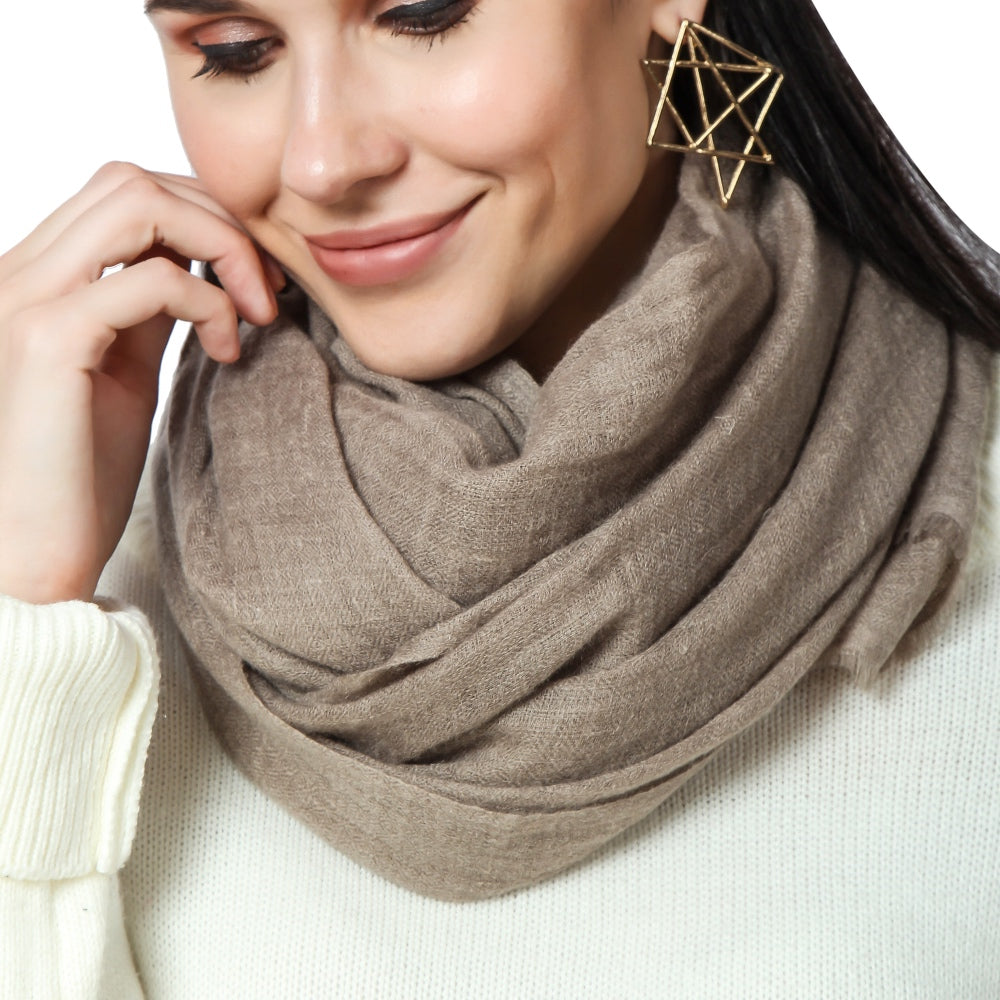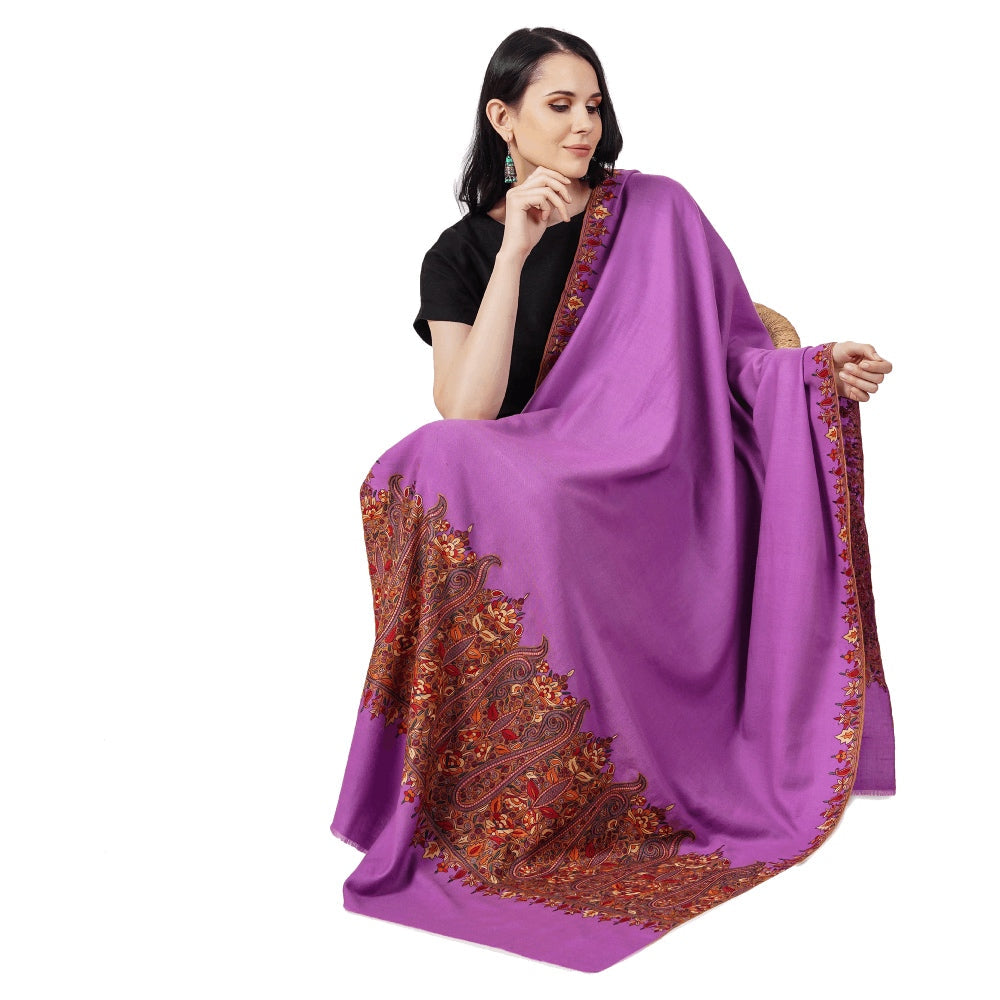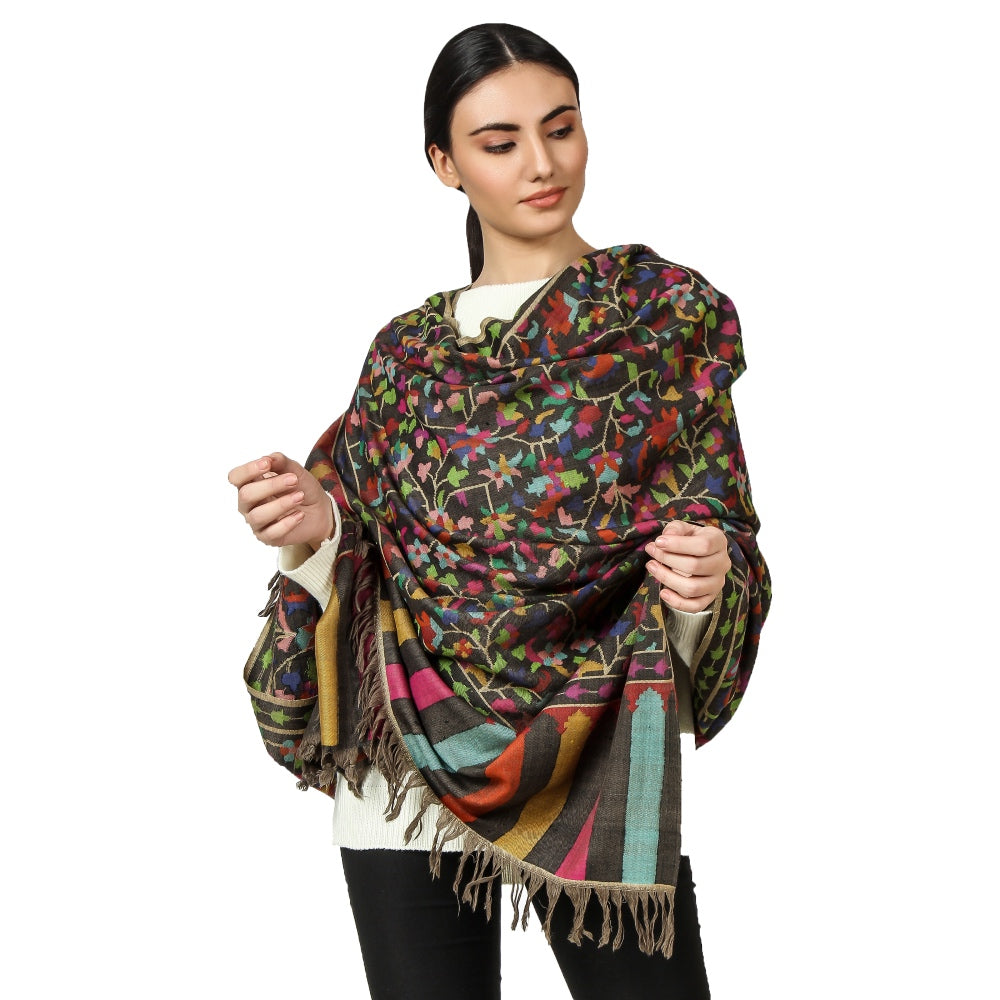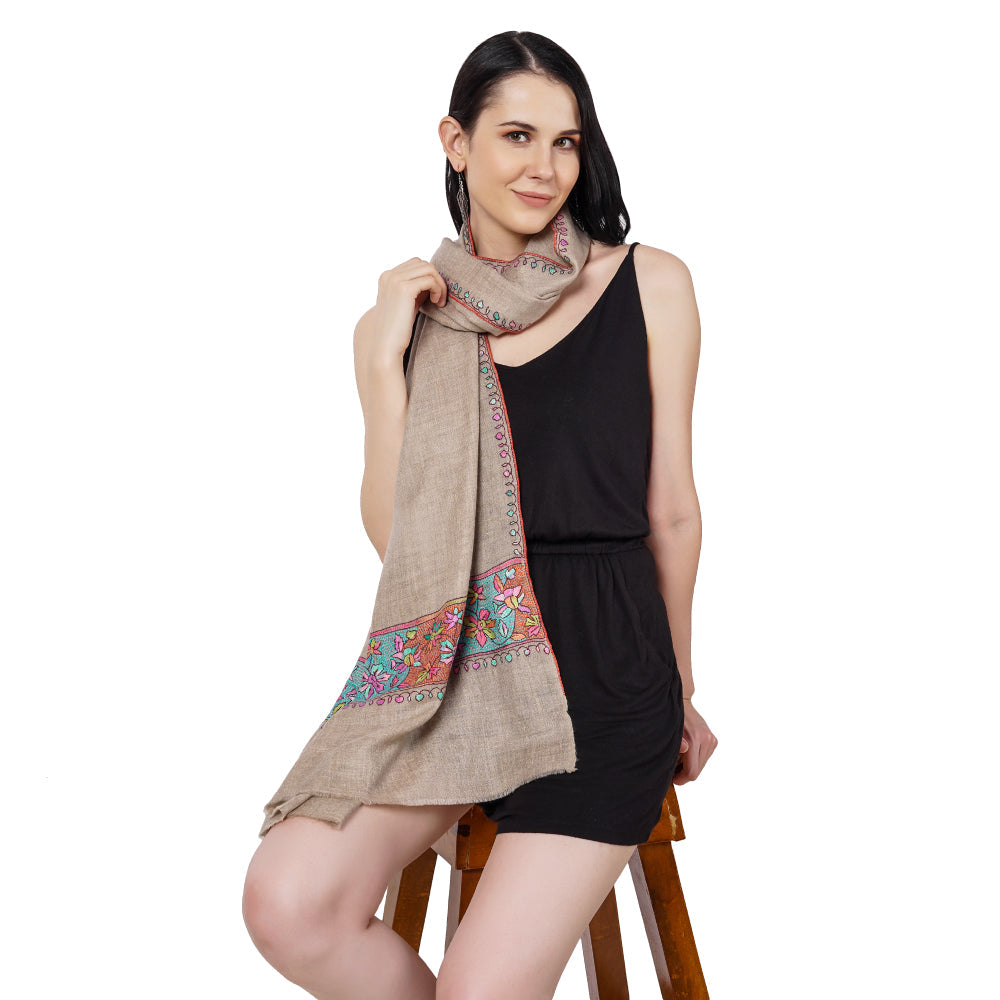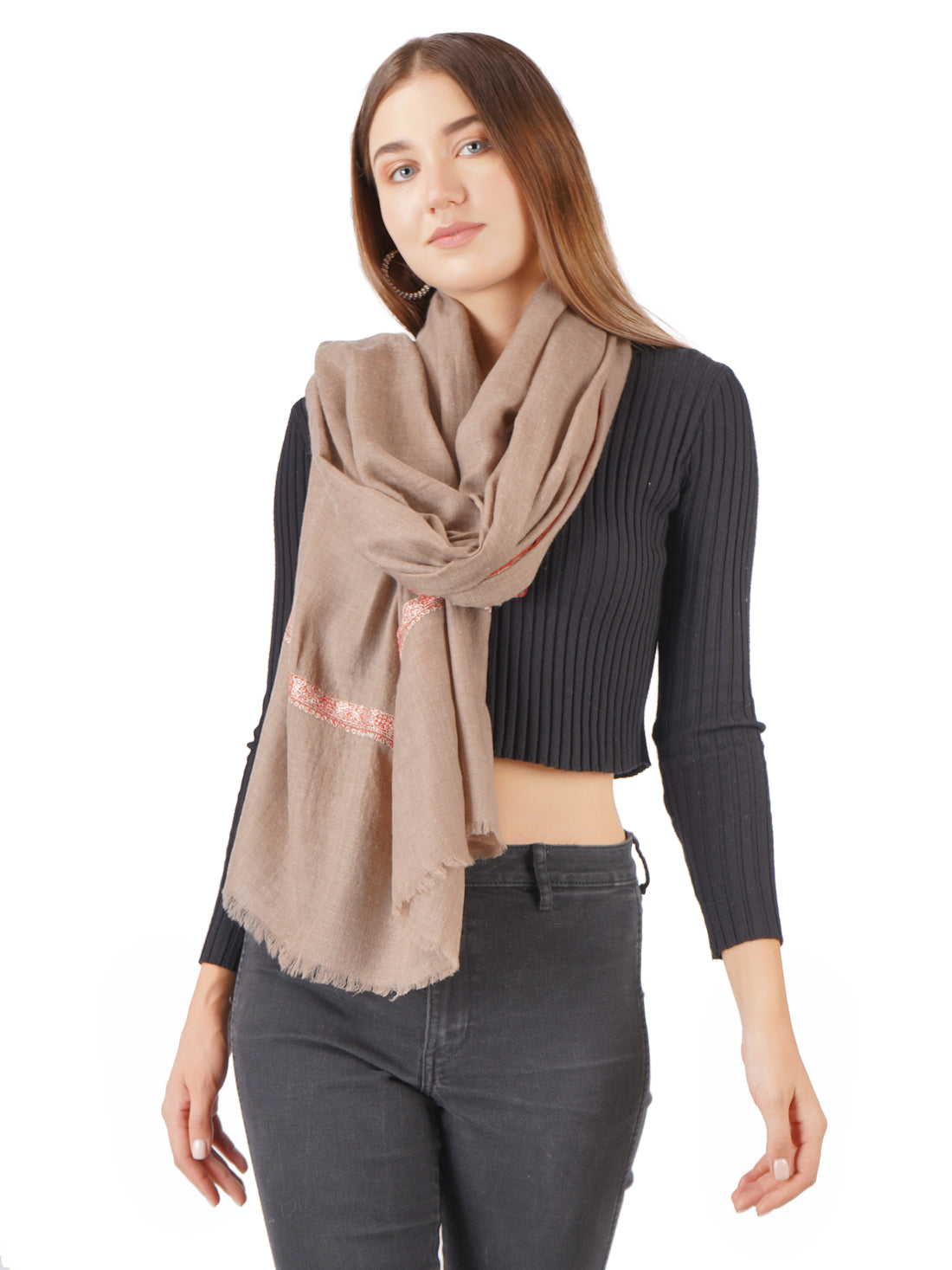
The Meaning of Pashmina: A Journey Through Luxury and Craftsmanship
Share
Pashmina—just the name evokes a sense of timeless luxury and elegance. Often mistaken as just another type of cashmere or a fashionable scarf, Pashmina is so much more. It’s a story of tradition, craftsmanship, and the rarest materials sourced from the high altitudes of the Himalayas. If you’ve ever wondered what makes Pashmina truly special, let’s unravel the story behind this exquisite fabric.
What Is Pashmina?
The word “Pashmina” originates from the Persian term pashm, which translates to "soft wool" or "soft gold." And this isn’t an exaggeration—Pashmina wool is one of the softest and most luxurious fibers in the world. But what sets Pashmina apart from regular wool or even other types of cashmere?

Pashmina refers to a specific type of fine cashmere wool derived from the undercoat of the Changthangi goat, found in the Himalayan region. While all Pashmina is cashmere, not all cashmere can be called Pashmina. The difference lies in the fineness and authenticity of the material. Pashmina fibers are finer, often measuring between 12–14 microns, making them softer, warmer, and more lightweight than standard cashmere.
The Material: Soft Gold of the Himalayas
Pashmina begins its journey in the harsh, frigid altitudes of Ladakh and Tibet, where temperatures often drop below freezing. The Changthangi goats, also known as Pashmina goats, develop a warm, insulating undercoat to survive these extreme conditions. It’s this undercoat—painstakingly combed out during the spring molting season—that becomes the raw material for Pashmina.
The rarity of the fiber contributes to its value. Each goat produces only 80–170 grams of usable Pashmina wool annually. To make a single shawl, it takes the combined wool of at least three goats, which highlights the exclusivity of authentic Pashmina products.

Craftsmanship and Tradition
Raw Pashmina fibers are just the beginning of this extraordinary journey. The real magic lies in the hands of skilled artisans, often hailing from families in Kashmir who have passed down their craft for generations.
The process begins with hand-spinning, where raw fibers are meticulously twisted into threads using a traditional spinning wheel known as a charkha. This delicate thread is then woven into fabric on wooden handlooms. Finally, intricate embroidery or designs may be added, often by master craftsmen who spend months creating patterns that turn each piece into wearable art.

Unlike machine-made textiles, Pashmina is entirely handcrafted. This not only preserves the authenticity of the material but also ensures a level of artistry that machines cannot replicate.
Common Misconceptions
In recent years, the term “Pashmina” has been misused to describe any soft woolen scarf. This has led to confusion and a flood of counterfeit products in the market. Here’s what you need to know:
-
Pashmina vs. Cashmere:
While both come from goat wool, Pashmina is finer and more delicate than standard cashmere. Authentic Pashmina is sourced exclusively from Changthangi goats. -
Counterfeit Products:
Many scarves labeled as “Pashmina” are blends of synthetic fibers or lower-grade wool. Authentic Pashmina has a distinctive softness, lightness, and warmth that fakes can’t replicate. -
Price as a Clue:
Genuine Pashmina products are labor-intensive and rare, so they come at a premium. If it seems too cheap to be true, it probably isn’t authentic.
Why Pashmina Is Special
Pashmina isn’t just about luxury—it’s about a sensory experience. The fabric is incredibly lightweight, often feeling like a second skin. Yet, it’s remarkably warm, thanks to its insulating properties. A single Pashmina shawl can keep you cozy in winter or act as a breathable wrap on cool summer evenings.
Its versatility also makes it a favorite among fashion enthusiasts. Whether draped over an evening gown or paired with a casual outfit, Pashmina adds an effortless touch of elegance.
Cultural Significance
Pashmina is deeply rooted in the traditions of the Kashmir Valley. Historically, it was a prized possession of royalty and nobility, with intricately woven shawls gifted as symbols of wealth and status. The famous Kashmiri jamawar shawls, adorned with elaborate patterns, are a testament to the region’s artistic heritage.
In modern times, Pashmina remains a cherished heirloom. It’s a popular choice for bridal trousseaus, special occasions, and gifting, symbolizing timeless beauty and thoughtfulness.
A Guide to Buying Authentic Pashmina
If you’re ready to invest in Pashmina, here are some tips to ensure you’re getting the real deal:
-
Touch and Feel:
Genuine Pashmina feels luxuriously soft and warm but never scratchy. -
Look for Authentic Brands:
While Pashwrap is a reputable brand, many other authentic Pashmina brands offer high-quality products. When purchasing, consider the factors like Direct from Kashmir Brands, Established Brands and prefer quality over price. -
Price Matters:
High-quality Pashmina is an investment. Be cautious of bargains that might compromise authenticity.
Conclusion
Pashmina is more than just a fabric; it’s a legacy of craftsmanship, a testament to nature’s wonders, and a symbol of timeless elegance. Understanding the true meaning of Pashmina helps us appreciate not only its luxurious qualities but also the artisans and traditions that keep this heritage alive.
So the next time you wrap yourself in a Pashmina shawl, remember—you’re wearing a piece of history, a labor of love, and a slice of Himalayan magic. Invest in the real deal, and let its story become part of your own.

